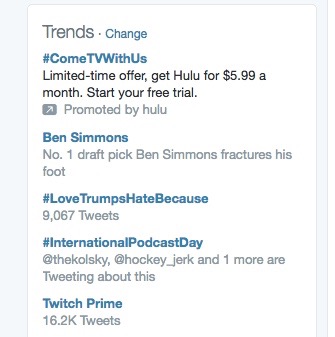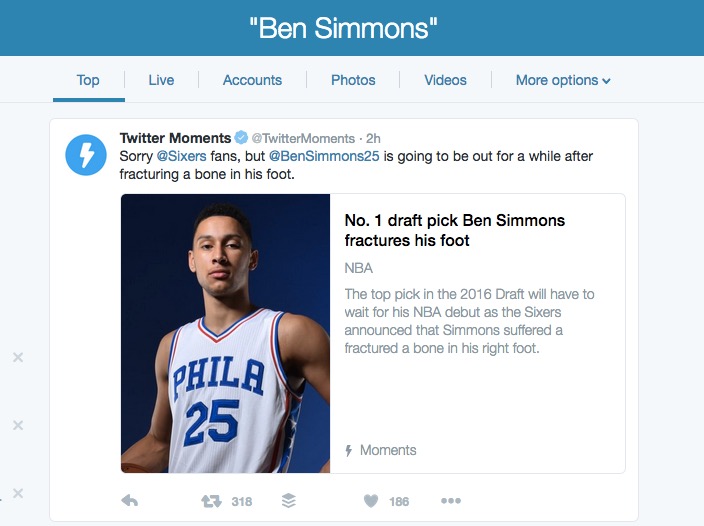Twitter tests a new way to describe what's trending
Giving trends a little more context

Twitter is testing a way to provide more context on what's trending by using the title of a matching Moment for a description, TechRadar has learned.
On Friday, we noticed the trend for basketball player Ben Simmons had a short blurb below it: "No. 1 draft pick Ben Simmons fractures his foot." Typically, the number of tweets about a trend or the handles of people talking about it are located below, so the description stood out.

We asked Twitter what the blurb was about, as we hadn't seen it before, and a spokesperson confirmed the service is currently testing these descriptions:
"We're beginning to experiment with using Moments content to provide more context on trends," the spokesperson said in a statement. "When a Moment is found to be relevant to a trend, we may use the title of the Moment in the trend's description. As always, what's trending will continue to be determined entirely by algorithm. More details about trends in our help center, and our Moments guidelines are here. "
Trends, with context
In the test, which started this week, these descriptions appear when there is a correlating Twitter Moment for a trend. The title of the Moment serves as the trend's description.
When we clicked into the "Ben Simmons" trend, we saw the Moment created around the news the top NBA draft pick had fractured his foot at the top of the page. The Moment title matched the trend description:

The same trend description appeared on both twitter.com as well as in the Twitter iOS app. The test is small right now and it's unclear if Twitter will ever make this a full-fledged feature.
Get daily insight, inspiration and deals in your inbox
Sign up for breaking news, reviews, opinion, top tech deals, and more.
It's important to note that Twitter's trends are determined wholly by algorithm, though there are some elements of personalization based on where you live and who you follow. A team of humans, meanwhile, curates Twitter's Moments, and the same curation team writes titles for them to ensure clarity. As the Twitter spokesperson said, trends will continue to be determined entirely by algorithm.
The test, at least visible to us, isn't over yet. Late Sunday night, we noticed two more descriptive blurbs under trends, this time for news about Kim Kardashian-West and the HBO show Westworld. Clicking into Moments, the title for the Kardashian-West Moment matched the trend description.

Smart move
A contextual blurb culled from Moments could be a smart move for Twitter as it provides more information about what might otherwise seem like random words, phrases and hashtags to a user.
If users know why something is trending, they may be more inclined to like, retweet and post their own tweets about the same topic. The feature could also get users clicking into Moments, which would be a win-win for Twitter.
The company has dabbled in trend descriptions before, including enhanced trends with descriptive blurbs for those with tailored trends activated, as reported by TechCrunch last year. Twitter removed descriptions from organic tailored trends in November 2015.
Twitter has made a slew of efforts to become more user-friendly over the past year, including recently letting users upload media attachments and quoted tweets without those counting against their 140-character limit.
Though the new trend descriptions may never make it out of testing, Twitter is at least actively experimenting with a way to help users engage more readily with a feature that can be mystifying. With Twitter membership floundering, any little thing should help.
Update: This post has been updated with the trends and Moments description for Kim Kardashian-West and Westworld.
Michelle was previously a news editor at TechRadar, leading consumer tech news and reviews. Michelle is now a Content Strategist at Facebook. A versatile, highly effective content writer and skilled editor with a keen eye for detail, Michelle is a collaborative problem solver and covered everything from smartwatches and microprocessors to VR and self-driving cars.
